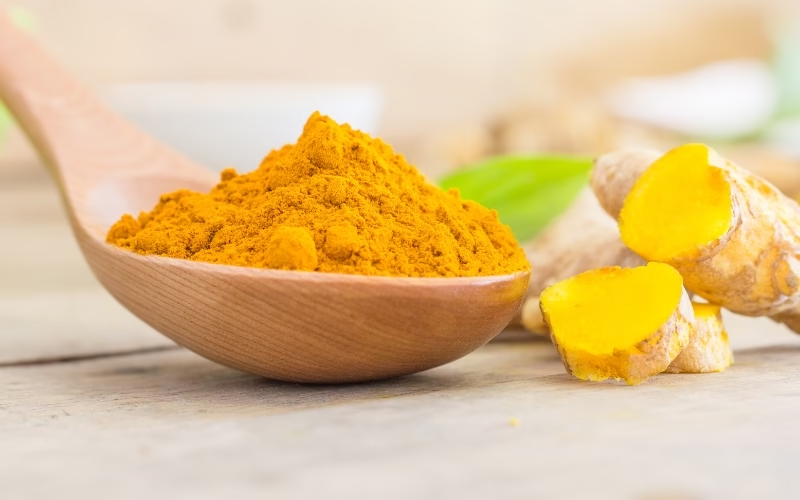It stains your fingers, warms your dishes, and holds a color so vibrant it feels like bottled sunshine. For most of us, turmeric is a familiar presence in the spice rack—a humble ingredient that gives curry its signature hue.
Yet, this golden powder carries a history far richer and more fascinating than its modern use might suggest. Its story is a golden thread that weaves through ancient cultures, sacred rituals, and modern-day science, proving that the brightest discoveries are often found by looking to the past.
A Golden Thread of History: The Story of Turmeric

The journey of turmeric begins over 4,000 years ago in the lush lands of ancient India. Here, it was first used not just for cooking, but as a dye for clothing and, most importantly, in a powerful system of traditional medicine known as Ayurveda.
The vibrant rhizome was revered as a sacred plant, celebrated for its purported cleansing properties and its role in a holistic approach to health. It was a key component in ceremonies and rituals, symbolizing purification and fertility, and was even a staple in traditional beauty practices.
From India, turmeric began its slow, deliberate journey across the globe. Arab traders carried it along ancient spice routes, introducing its unique qualities to different cultures. In China, it found a home in traditional Chinese medicine, valued for its ability to aid digestion and support vitality.
Across the ancient world, from Persia to the Middle East, its golden presence became a valued part of both the culinary and medicinal landscapes. It wasn’t until the Middle Ages that it truly made its way to Europe, where it became a more affordable, if less pungent, alternative to the highly prized saffron.
Of course, the history of turmeric isn’t all lore and legend. In recent decades, modern science has turned its attention to the very compound that gives turmeric its famous golden glow: curcumin.
Spicy Take: All that Glitters is Curcumin
Researchers have worked to uncover the mechanisms behind its traditional uses, confirming that its power lies in this active ingredient. This is where the ancient wisdom of a sacred root meets the grounded, intelligent approach of today’s wellness community—it’s holisticism, not mysticism.
While the history of turmeric is rich with tradition, its modern-day resurgence is powered by science. At the heart of turmeric’s properties are a group of active compounds called curcuminoids, with the most important one being curcumin. Scientists are intrigued by how these compounds interact with the body, not at a superficial level, but deep within our cells.
The Science Behind the Gold: A Cellular Story and Circuminoids
At the cellular level, our bodies are constantly responding to internal and external stressors. In a healthy state, these responses are balanced. However, when things get out of alignment, cells can send out signals that lead to discomfort and long-term concerns.
Curcuminoids are believed to influence these cellular signaling pathways. They don’t just act on the surface; they engage in a conversation with the body’s fundamental systems, influencing how cells communicate with one another.
This elegant, cellular-level activity is why curcuminoids are such a popular topic in modern research. The science suggests that by helping to moderate these cellular responses, curcuminoids can play a role in promoting comfort and maintaining cellular health, as well as potentially decreasing underlying inflammation, which may have a global positive benefit within the body in ways many would not expect.
It’s a prime example of an intelligent approach to well-being—one that seeks to support the body’s own incredible natural processes.
Inherent Shortcomings for Practical Everyday Use: Average Turmeric Lacks a Clinical Dose of Curcuminoids
Raw turmeric powder usually contains about 3-5% curcuminoids by weight, although some studies report a range as wide as 1-6%.
By comparison, our advanced joint formula in Smartilage, which has 95% curcuminoids, is approximately 19 times stronger than an average serving of raw turmeric.
More Than a Culinary Delight
Today, turmeric is no longer just an exotic spice. It has become a staple in kitchens and health regimens alike, showing up in everything from golden lattes to dietary supplements. The journey of this humble root—from a sacred plant in ancient rituals to a subject of modern research—is a powerful reminder that the foundation of a healthy, vibrant life is often a timeless one.
It’s about taking the wisdom of the past and applying it to an intelligent approach to your well-being today, ensuring that your body is prepared for whatever the future holds.

Leave a Reply